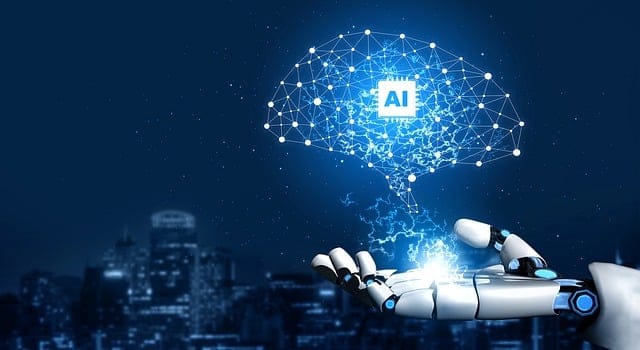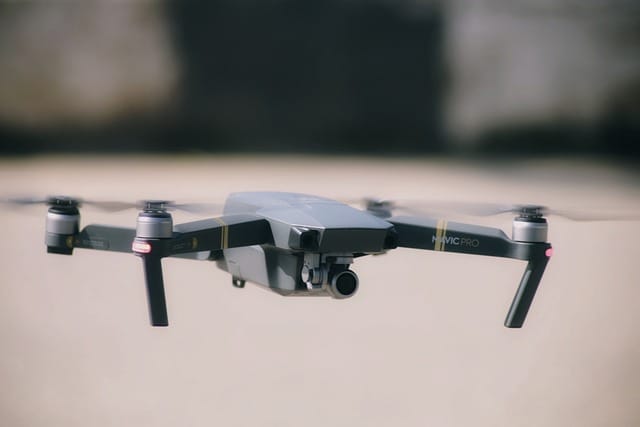So, how does it work? Picture a giant spider web—each thread representing a neuron in our brain. Deep learning uses neural networks, which are composed of layers of nodes (or neurons). When data comes in, it’s like throwing a ball into this web. The information travels through the layers, getting analyzed and interpreted as it goes—transforming raw data into insights. It’s like baking a cake: you mix flour, sugar, eggs, and with the right temperature, you end up with something delicious. Similarly, when deep learning models gather vast amounts of data, they fine-tune their understanding, leading to impressive outcomes.
Now, let’s talk applications! Deep learning is everywhere—from your favorite streaming service recommending your next binge-watch to self-driving cars navigating busy streets. It’s also making waves in healthcare, helping doctors spot diseases in x-rays more accurately than ever. Think about it; just like a superhero with X-ray vision, deep learning algorithms detect patterns and anomalies that might slip past even the keenest human eye.
Ever used voice assistants like Siri or Alexa? Yep, that’s deep learning at work! These systems understand your voice commands by breaking them down into recognizable patterns. So, the next time you ask your assistant to play your favorite song, remember there’s a whole brainy network behind that charm, diligently working to make your life easier and more connected.
Unlocking the Black Box: A Deep Dive into the Mechanics of Deep Learning

At its core, deep learning mimics the human brain through artificial neural networks. Picture neurons buzzing with activity; that’s how layers of interconnected nodes communicate, akin to a busy city where each intersection represents a decision or guess. When you feed it data—think photos, sounds, or texts—these nodes ignite, sparking connections and adjustments. It’s like teaching a toddler how to recognize a dog. Initially, they might just see fur and a wagging tail, but with enough examples, they learn to discern all breeds, sizes, and colors.
Ever wonder why deep learning is so powerful? It’s because of its ability to learn and self-improve over time. This technique, known as backpropagation, is like an athlete reviewing game footage to iron out mistakes. The model makes a prediction, checks how far off it was, and then adjusts its understanding. Imagine trying to tune a guitar by listening—every note helps you tweak the strings until that perfect sound emerges.
From Neural Networks to Real-World Impact: Exploring the Applications of Deep Learning


Think of deep learning as the brain’s younger, tech-savvy cousin. While traditional machine learning might pick a few features from data to make decisions, deep learning dives deep, layers upon layers of neurons forging connections that mimic the way we think. This layered approach allows for outstanding performance in recognizing speech, identifying images, and even translating languages. Ever wondered how Netflix knows exactly what you want to binge-watch next? Yep, you guessed it—deep learning.
But it doesn’t stop at entertainment. Picture a surgeon performing a complex operation. With the aid of deep learning, algorithms can analyze medical images with remarkable accuracy, leading to earlier and more precise diagnoses. How about climate change? Deep learning technologies can crunch climate data, predicting weather patterns and guiding us toward a more sustainable future. It’s like having a crystal ball, except it’s built on advanced algorithms!
Decoding Deep Learning: The Science Behind Machines That Think
Picture this: when you teach a child to identify animals, you show them pictures of cats, dogs, and so on. Over time, they learn to distinguish between them based on their features. Deep learning does just that but on a colossal scale. It sifts through massive amounts of data — thousands of images or texts — and learns from them, pulling out patterns and insights. It’s like giving a machine a pair of glasses to see the world more clearly!
But how does it all happen? At the core of deep learning are layers of algorithms. These layers are like a series of filters, each helping to refine what the machine understands. The first layer might pick up on basic shapes, while the next identifies colors, and eventually, they combine this information to recognize a full-fledged object. Isn’t that wild?
Deep learning thrives on data, so the more it gets, the better it becomes. Think of it as cooking: the more ingredients and experiences you have, the tastier your dish turns out. With deep learning, we’re not just programming machines; we’re teaching them to think and adapt.
As we step into this fascinating era of artificial intelligence, the potential applications are staggering. From healthcare to self-driving cars, the science behind machines that think is reshaping our future in ways we’ve only imagined.
Transforming Data into Decisions: How Deep Learning is Revolutionizing Industries
Let’s be real: businesses today are swamped with data. Every click, every transaction, and every interaction generates a pile of information that can be daunting. But deep learning steps in like a superhero, analyzing this data at lightning speed. Picture a detective who can instantly connect the dots between clues; that’s deep learning for you. It’s not just about numbers anymore; it’s about setting the stage for smart decisions that propel businesses forward.
Consider healthcare, for example. Deep learning algorithms can analyze medical images and patient records, identifying diseases often faster and more accurately than doctors. It’s as if they’re scanning through millions of cases effortlessly, pinpointing anomalies with precision. Suddenly, medical teams can focus on what they do best – providing care – rather than drowning in paperwork.
Now, let’s not forget about industries like finance, where deep learning is reshaping risk assessment. With its ability to analyze market trends and predict fluctuations, it’s like having a crystal ball. Investors can make more informed decisions, which is crucial in a rapidly changing market. Are you starting to see how deeply intertwined our data-driven world is becoming with intelligent technology?
Beyond the Hype: The Practical Uses of Deep Learning in Everyday Technology
Think of deep learning as the brain behind many of the apps and gadgets we can’t live without. Ever wondered how Netflix knows just what to suggest next? That’s not luck; it’s a sophisticated algorithm analyzing your viewing habits and predicting what you’ll love next, almost like a friend who knows you inside out. Similarly, have you tried Google Photos? It has this snazzy capability to recognize faces and categorize your images automatically. It’s uncanny how it can identify a sunny beach among hundreds of photos, making your life a whole lot easier when you’re searching for that perfect vacation snapshot.
And let’s not overlook voice assistants like Siri and Alexa. These digital pals are getting smarter every day, thanks to deep learning. They’re not just responding to basic commands anymore; they’re learning your preferences, understanding your requests, and even holding conversations that feel remarkably human. It’s like having a personal assistant who knows you better than you know yourself!
Frequently Asked Questions
How Does Deep Learning Differ from Traditional Machine Learning?
Deep learning is a subset of machine learning that uses neural networks with many layers to automatically learn from vast amounts of data. In contrast, traditional machine learning relies on hand-crafted features and algorithms, requiring more human intervention for model design. While deep learning excels in complex tasks like image and speech recognition, traditional methods may perform better on simpler, structured data with limited input.
What is Deep Learning and How Does It Work?
Deep learning is a subset of artificial intelligence that mimics the human brain’s neural networks to process large amounts of data. It involves training algorithms on vast datasets to recognize patterns and make predictions. The process typically includes multiple layers of processing, allowing the model to learn increasingly complex features from the data. Applications range from image and speech recognition to natural language processing.
What Are the Common Applications of Deep Learning?
Deep learning is widely utilized in various fields including image and speech recognition, natural language processing, healthcare diagnostics, and autonomous vehicles. Its ability to analyze large datasets and identify patterns makes it essential for advancements in artificial intelligence, data-driven decision-making, and automation.
What Are the Key Components of Deep Learning Models?
Deep learning models are primarily built on three key components: neural networks, large datasets, and powerful computational resources. Neural networks, which are inspired by the human brain, consist of layers of interconnected nodes that process data. Large datasets provide the necessary input for training these models, allowing them to learn patterns and make predictions. Finally, powerful computational resources, such as GPUs, enable the complex calculations needed to train deep learning models efficiently.
What Skills Do I Need to Start Learning Deep Learning?
To start learning deep learning, you should have a strong foundation in mathematics, particularly in linear algebra, calculus, and probability. Additionally, programming skills in Python are essential, as it is the primary language used in many deep learning frameworks. Familiarity with machine learning concepts, data manipulation, and basic knowledge of neural networks will also be advantageous.






